Solar eclipse of November 12, 1966
A total solar eclipse occurred on November 12, 1966. A solar eclipse occurs when the Moon passes between Earth and the Sun, thereby totally or partly obscuring the image of the Sun for a viewer on Earth. A total solar eclipse occurs when the Moon's apparent diameter is larger than the Sun's, blocking all direct sunlight, turning day into darkness. Totality occurs in a narrow path across Earth's surface, with the partial solar eclipse visible over a surrounding region thousands of kilometres wide. The path of totality cut a swath across South America from north of Lima, Peru, passing the northeastern tip of Chile, Bolivia, Northwest of Argentina, southwestern tip of Ñeembucú Department in Paraguay, nearly to the southernmost tip of Brazil.
| Solar eclipse of November 12, 1966 | |
|---|---|
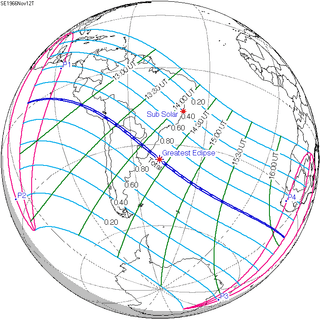 Map | |
| Type of eclipse | |
| Nature | Total |
| Gamma | -0.33 |
| Magnitude | 1.0234 |
| Maximum eclipse | |
| Duration | 117 sec (1 m 57 s) |
| Coordinates | 35.6°S 48.2°W |
| Max. width of band | 84 km (52 mi) |
| Times (UTC) | |
| Greatest eclipse | 14:23:28 |
| References | |
| Saros | 142 (20 of 72) |
| Catalog # (SE5000) | 9435 |

Observations
The NASA Gemini XII mission observed this total eclipse from space:
The Canary Island controller greeted the crew in the morning with the news that there would be a second maneuver - 5 meters forward - to line the vehicles up properly. The prospects panned out richly, and the crew reported seeing the eclipse "right on the money at 16:01:44 g.e.t." Although the crew thought for a moment that they were slightly off track, their aim had actually been accurate.[1]
Related eclipses
Solar eclipses of 1964–1967
This eclipse is a member of a 1964–1967 series at alternating nodes every 6 synodic months.
Note: Partial solar eclipses on January 14, 1964 and July 9, 1964 belong to the previous lunar year set.
| Solar eclipse series sets from 1964–1967 | ||||
|---|---|---|---|---|
| Ascending node | Descending node | |||
| Saros | Map | Saros | Map | |
| 117 | 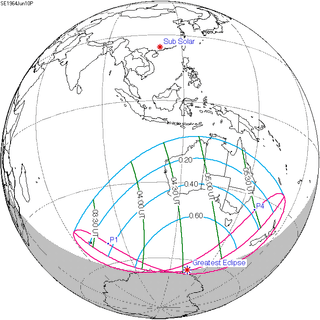 1964 June 10 Partial |
122 | 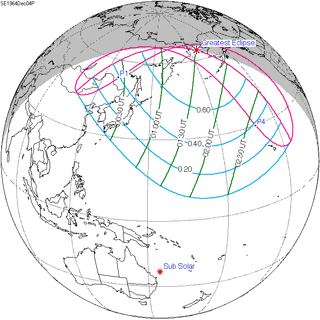 1964 December 4 Partial | |
| 127 |  1965 May 30 Total |
132 | 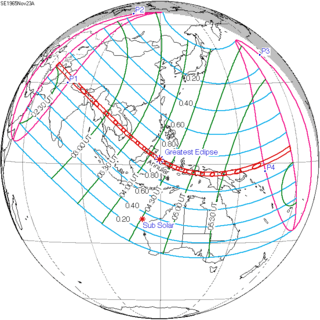 1965 November 23 Annular | |
| 137 | 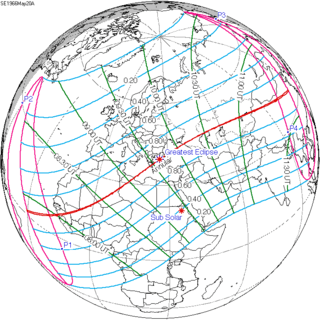 1966 May 20 Annular |
142 |  1966 November 12 Total | |
| 147 | 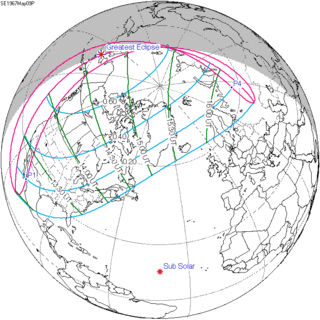 1967 May 9 Partial |
152 | 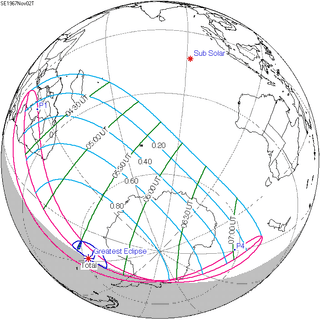 1967 November 2 Total (non-central) | |
Saros series 142
It is a part of Saros cycle 142, repeating every 18 years, 11 days, containing 72 events. The series started with partial solar eclipse on April 17, 1624. It contains one hybrid eclipse on July 14, 1768, and total eclipses from July 25, 1786 through October 29, 2543. The series ends at member 72 as a partial eclipse on June 5, 2904. The longest duration of totality will be 6 minutes, 34 seconds on May 28, 2291. All eclipses in this series occurs at the Moon’s descending node.[2]
| Series members 17–41 occur between 1901 and 2359 | ||
|---|---|---|
| 17 | 18 | 19 |
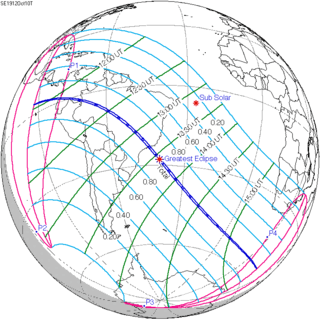 October 10, 1912 |
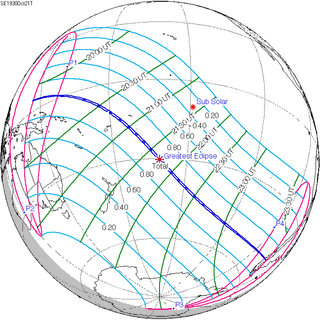 October 21, 1930 |
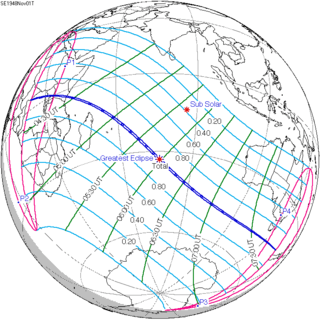 November 1, 1948 |
| 20 | 21 | 22 |
 November 12, 1966 |
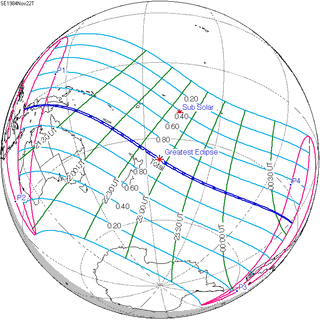 November 22, 1984 |
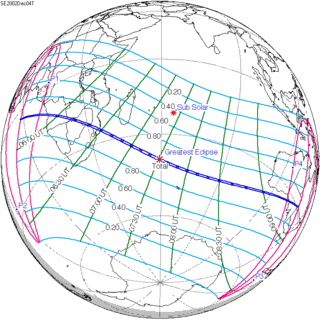 December 4, 2002 |
| 23 | 24 | 25 |
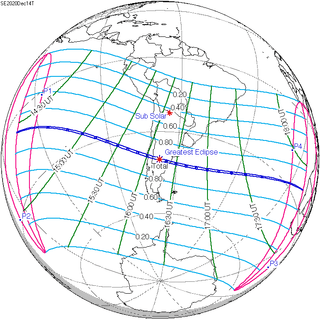 December 14, 2020 |
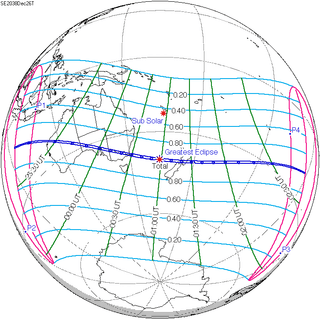 December 26, 2038 |
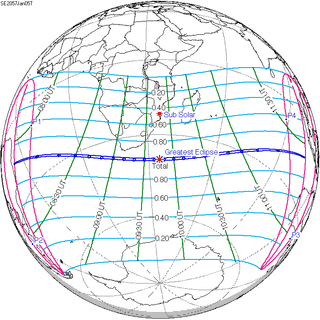 January 5, 2057 |
| 26 | 27 | 28 |
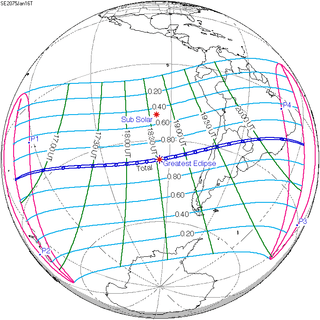 January 16, 2075 |
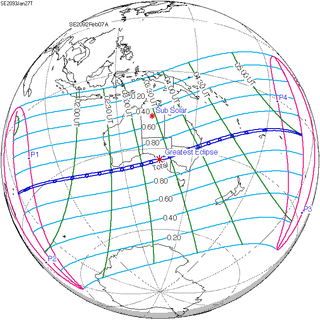 January 27, 2093 |
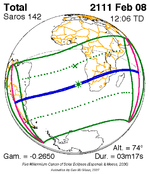 February 8, 2111 |
| 29 | 30 | 31 |
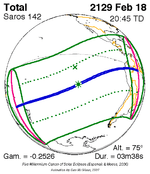 February 18, 2129 |
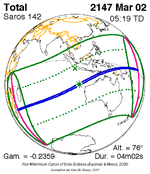 March 2, 2147 |
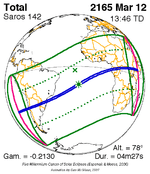 March 12, 2165 |
| 32 | 33 | 34 |
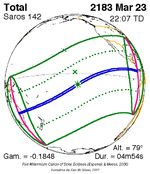 March 23, 2183 |
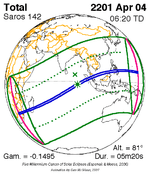 April 4, 2201 |
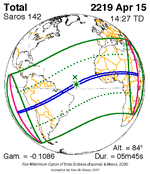 April 15, 2219 |
| 35 | 36 | 37 |
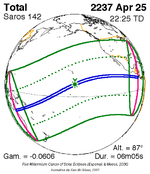 April 25, 2237 |
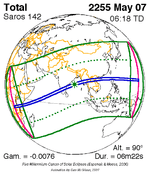 May 7, 2255 |
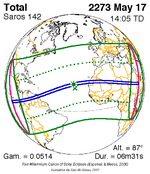 May 17, 2273 |
| 38 | 39 | 40 |
 May 28, 2291 |
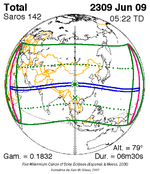 June 9, 2309 |
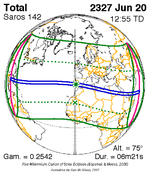 June 20, 2327 |
| 41 | ||
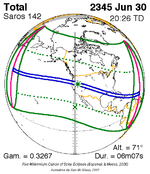 June 30, 2345 | ||
Metonic series
The metonic series repeats eclipses every 19 years (6939.69 days), lasting about 5 cycles. Eclipses occur in nearly the same calendar date. In addition, the octon subseries repeats 1/5 of that or every 3.8 years (1387.94 days).
| 22 eclipse events, progressing from north to south between April 8, 1902 and August 31, 1989: | ||||
|---|---|---|---|---|
| April 7–8 | January 24–25 | November 12 | August 31-September 1 | June 19–20 |
| 108 | 114 | 116 | ||
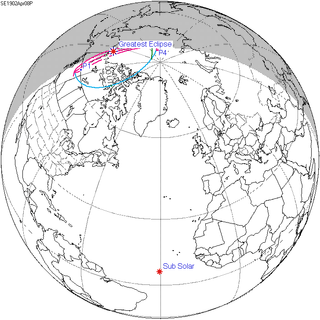 April 8, 1902 |
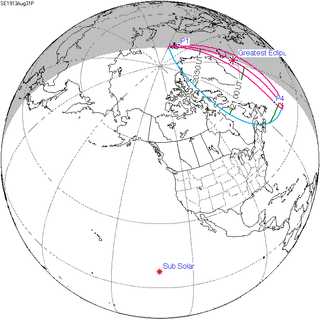 August 31, 1913 |
 June 19, 1917 | ||
| 118 | 120 | 122 | 124 | 126 |
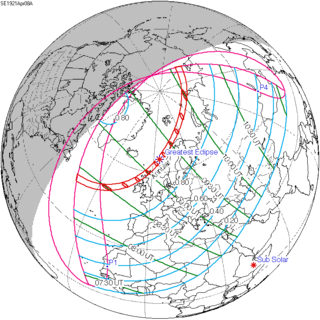 April 8, 1921 |
 January 24, 1925 |
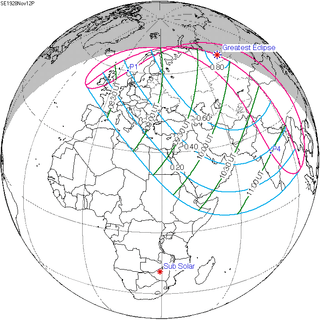 November 12, 1928 |
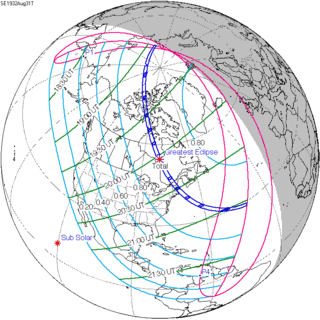 August 31, 1932 |
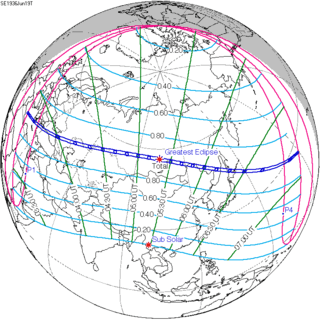 June 19, 1936 |
| 128 | 130 | 132 | 134 | 136 |
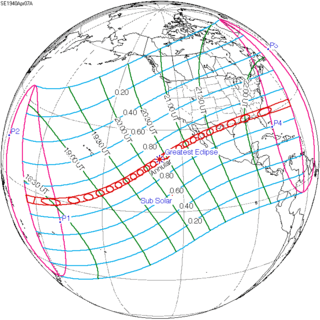 April 7, 1940 |
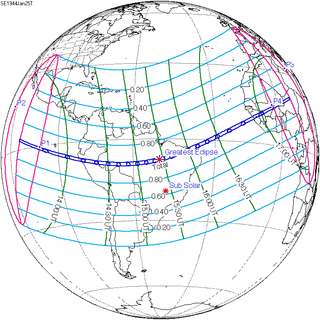 January 25, 1944 |
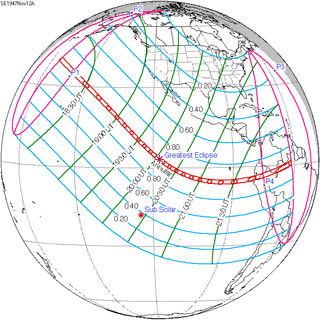 November 12, 1947 |
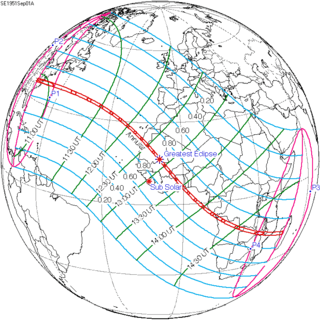 September 1, 1951 |
 June 20, 1955 |
| 138 | 140 | 142 | 144 | 146 |
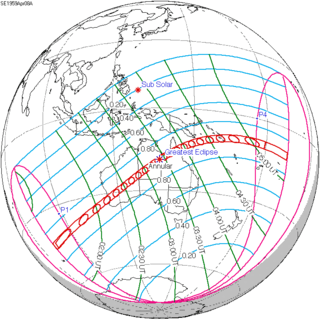 April 8, 1959 |
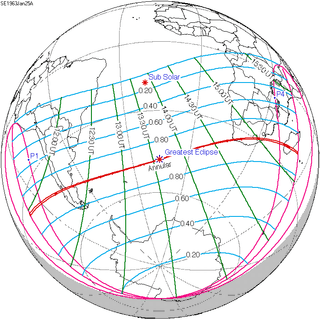 January 25, 1963 |
 November 12, 1966 |
 August 31, 1970 |
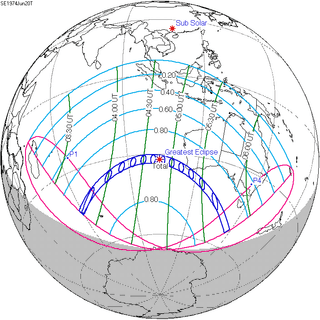 June 20, 1974 |
| 148 | 150 | 152 | 154 | |
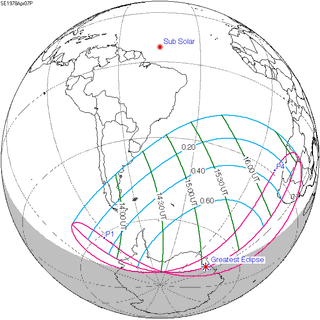 April 7, 1978 |
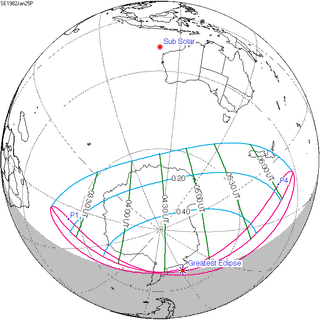 January 25, 1982 |
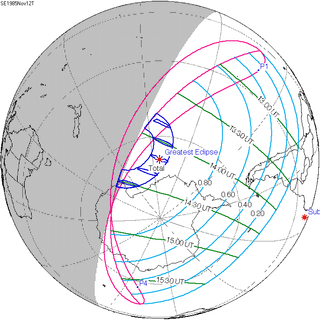 November 12, 1985 |
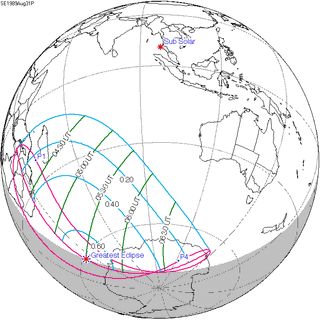 August 31, 1989 | |
Notes
References
- Earth visibility chart and eclipse statistics Eclipse Predictions by Fred Espenak, NASA/GSFC
.jpg)
